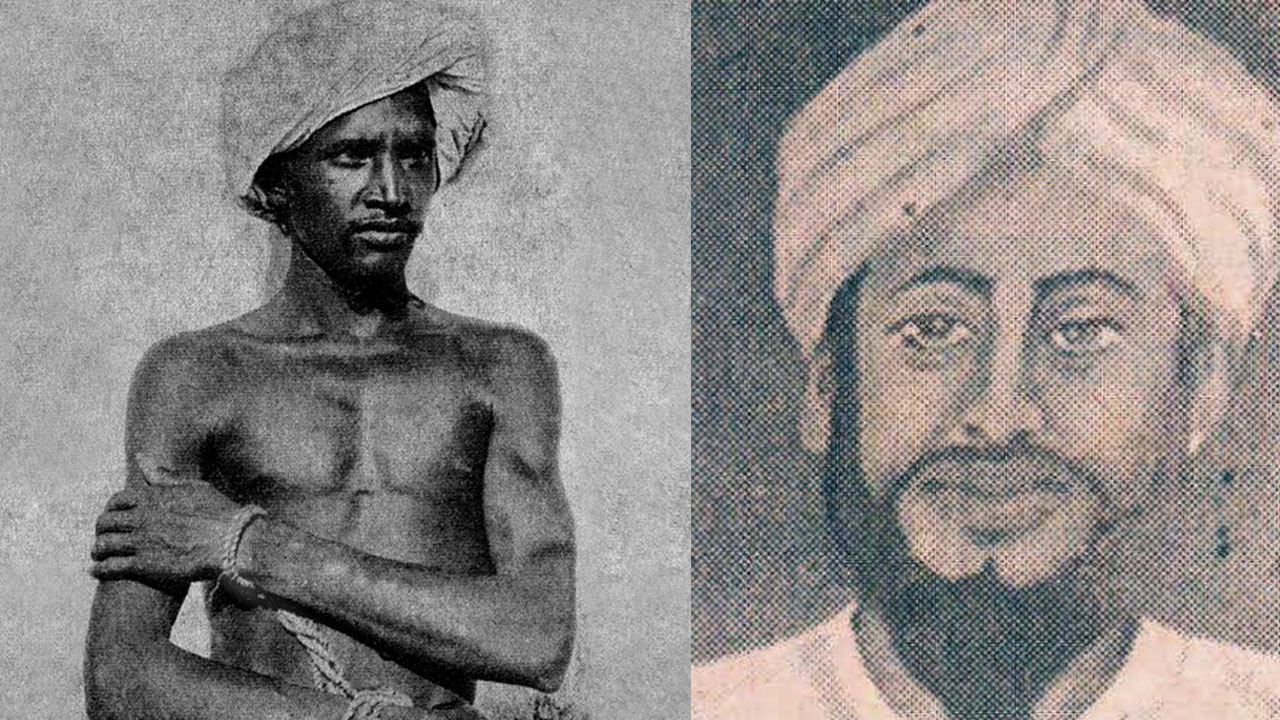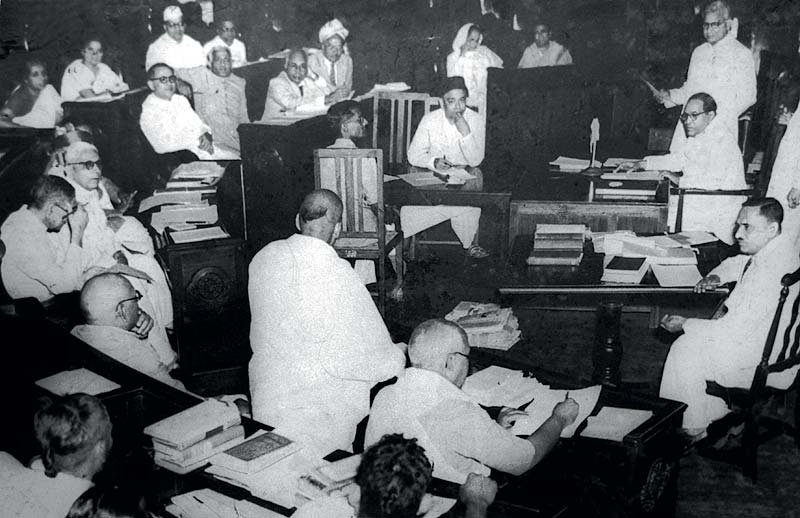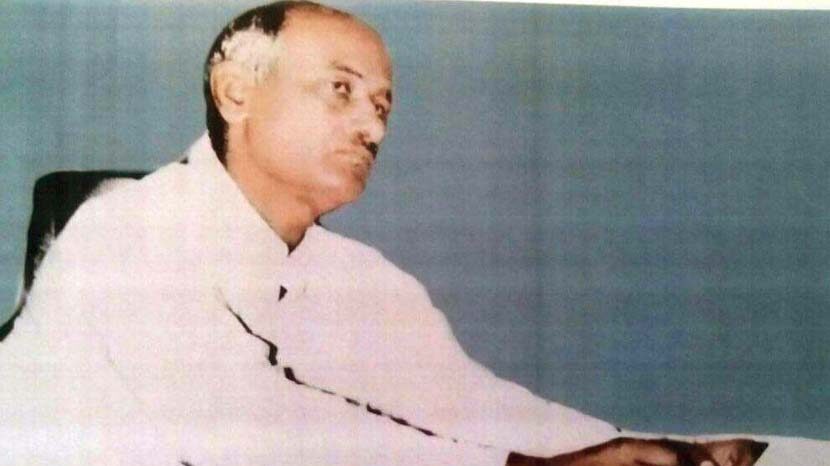Dr Bhimrao Ambedkar’s writings played an important role in turning him into an international figure. For the Dalit community, Dr Ambedkar was a hero towering over all others and a social activist, but for the world at large, Ambedkar was an alert and alive thinker. His credentials as a thinker were established through his articles, books and magazines, and also the newspapers that he published. Among his own books were The Problem of Rupee, Provincial Finance in British India, Annihilation of Caste and Who were the Shudras? The Education Department of the Government of Maharashtra has published a compilation of his writings and speeches in 21 volumes.
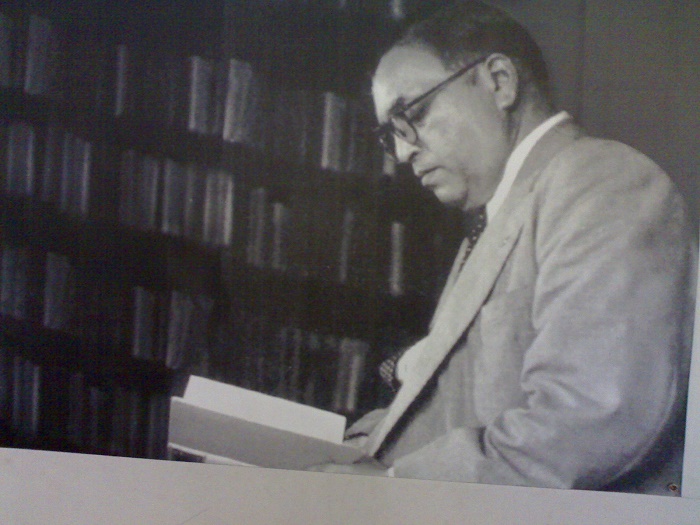
Some of his books have been translated into and published in Hindi. They include Achoot Kaun Aur Kaise; Shudron Kee Khoj; Buddh Ya Karl Marx; Dharmantarana Kyon; Hindu Nari Ka Utthan Aur Patan; Hindu Dharma Ki Riddle; Ranade, Gandhi Aur Jinnah; Buddh Aur Unka Dhamma; Jatibhed Ka Uchhed; East India Company Ka Prashashan Aur Vitt; and Pracheen Bharatiya Vanijya.
Ambedkar’s writings on education include his deposition before the Indian Statutory Commission in the Bombay Presidency on “State of Education of the Dalits”. His deposition forms part of the compilation Dr Ambedkar: Sampoorna Vangmay (Volume 4). In addition, his article titled “Subsidy for Education” has been included in Dr Ambedkar: Sampoorna Vangmay (Volume 3); this is based on his speech to the Bombay Legislative Council, delivered on 12 March 1927, in which he pleads for increased subsidy from the government on education and also underlines the need for inexpensive education for the deprived sections. In Dr Ambedkar: Sampoorna Vangmay (Volume 19), among other concerns of the SCs, their concerns on education are also listed. They are divided into two parts – under ‘lack of assistance for higher education’ and ‘lack of facilities for technical training’.
Dr Ambedkar’s struggle for Dalits’ education
Whenever we talk of freedom, we forget about the freedom of Dalits. Shortly, we are going to celebrate the anniversary of our freedom from the British. This is the perfect time for talking about the freedom of Dalits. The Dalits were victims of double slavery – and it was Ambedkar who freed them from it. Shaken to the core by Gandhiji’s Civil Disobedience Movement, the British Government convened a Round Table Conference in London on 12 November 1930. A young barrister attending the conference startled everyone by refusing to acknowledge Gandhiji as the leader of all Indians. His name was Dr B.R. Ambedkar. He said that most of the Congress leaders believed in caste-based discrimination and they would not allow the Dalits any say in constitutional processes. That was why, he added, there was a need for separate electorates where the candidates and the electors both would only be Dalits.
On 6 August 1932, British prime minister Ramsay Macdonald announced the Communal Award, under which the Dalits were recognized as distinct from the Hindus and a provision was made for a separate electorate for them. At the time, Gandhiji was incarcerated in the Poona jail. He saw this announcement as a conspiracy to alienate Dalits from the Hindus. On 20 September 1932, Gandhiji began a fast-unto-death in protest against the Communal Award, sending the nation into a tizzy. Dr Ambedkar was urged to save the life of Gandhiji. Bowing to the pressure mounted on him from all sides, Ambedkar agreed for a compromise but on the condition that the Dalits are provided reservations at all levels. Gandhiji agreed, and he broke his fast on 26 September.
In the second half of the 19th century, social reformers had launched an acerbic attack on brahmanical rituals through their books. Jotirao Phule’s Gulamgiri was one of them. In the South, Periyar and Narayan Guru sounded the bugle against the Varna system. A few decades later, Ambedkar was given the responsibility of drafting the Constitution of the newly independent India in due recognition of his merit and scholarship. He became the country’s first law minister. Since then, Ambedkar’s thoughts have grown in relevance with each passing year.
Even before Independence, he was recognized as a jurist of rare intellect. He raised some pertinent questions about education in Indian society while speaking in the Bombay Legislative Council on 12 March 1927. He was deeply concerned that India was lagging behind in education.
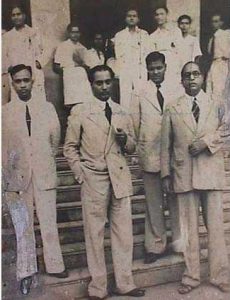
Referring to a report of the Government of India, which said that if the progress of education went on at the rate at which it is going on then, it would take 40 years for boys and 300 years for girls of school-going age to be brought under education, Dr Ambedkar said, “We have in this presidency two departments, which if I may say so, are working at cross purposes. We have the Department of Education, the purpose of which is to moralise and socialise the people. We have, on the other hand, the Department of Excise which is working, if I may say so, in the reverse direction. Sir, I think that it is not asking too much if I plead that we should at least spend on education the same amount that we take from the people in the form of excise revenue. The amount of expenditure that we incur per individual in this presidency on education is only 14 annas, but the amount of money that we recover in the form of excise revenue is Rs 2.17 [35 annas]. I think it is only fair that our educational expenditure should be so adjusted that we should spend on the education of the people as much as we take from them in the form of excise.”[1] Today, when, besides students, other pro-change sections are also taking to the streets demanding more budgetary allocation for education, Ambedkar’s thoughts can show us the right direction.
Raising another issue in the same debate, Dr Ambedkar said, “At present, the amount of money which we are spending on primary education is to a large extent really wasted. The object of primary education is to see that every child that enters the portals of a primary school does leave it only at a stage when it becomes literate and continues to be literate throughout the rest of his life. But if we take the statistics, we find that out of every hundred children that enter a primary school only eighteen reach the fourth standard; the rest of them, that is to say, 82 out of every 100, relapse into the state of illiteracy.”[2]
We have yet to overcome the problem of school dropouts. Dr Ambedkar had grasped this problem long ago. He realized that only sending a child to school was not enough. It is also important to keep them in school till they have attained primary education. Only planting a sapling is not enough. It is also necessary to tend it with water and fertilizers; otherwise it will die sooner or later. That is why, Ambedkar said, “I therefore request the honourable education minister to spend more money on primary education, if for nothing else, at least for the purpose of seeing that what he spends bears some fruit ultimately.”
Dr Ambedkar also dwelt on the commercialization of education. He said, “Going over the figures which give us information as to the manner by which we finance education in this presidency I find that out of the total expenditure, which we incur on arts colleges, something like 36 per cent is financed from fees; out of the expenditure that we incur on high schools, something like 31 per cent. is financed from fees; out of the expenditure that we incur on middle schools, something like 26 per cent is derived from fees. Now, Sir, I submit that this is commercialization of education. Education is something which ought to be brought within the reach of everyone.”[3] As Dr Ambedkar had deep concern for the lower sections of society, he added, “We are arriving at a stage when the lower orders of society are just getting into the high schools, middle schools and colleges, and the policy of this department therefore ought to be to make higher education as cheap to the lower classes as it can possibly be made.”
He cites another important issue: “The census report of this presidency has, for the purpose of comparing the advancement of the different communities in the matter of education, divided the total population into four different classes. The first class is called “advanced Hindus”, the second class is called “intermediate Hindus” and it includes those people, who, for political purposes, have now been designated as non-Brahmins, ie Marathas and allied castes. There is a third class called the backward classes which includes the depressed classes, Hill Tribes and the Criminal Tribes. Then, we have the fourth class which covers the Mahomedans. Bearing these divisions in mind, one sees a great disparity in the comparative advancement of these different communities in the matter of education.”[4] The disparities informing Indian society were the main cause for concern for Dr Ambedkar. He said, “This country is composed of different communities. All these communities are unequal in their status and progress … Economically speaking or socially speaking, backward classes are handicapped in a manner in which no other community is handicapped. I, therefore, think that the principle of favoured treatment must be adopted in their case. As I have shown, their position is worse than that of the Mahomedans and my only pleading is that if the most favoured treatment is to be given to those who deserve it and need it most, then the backward classes deserve more attention of Government than do the Mahomedans.”[5]
To sum up, Dr Ambedkar’s views on education were in consonance with India’s geographical, social and economic situation and reflected scientific reasoning.
‘Educate, unite, struggle’
Dr Ambedkar’s views on education have yet to be studied deeply – this despite the fact that he had been working in the field of education since he founded the Hitkarini Sabha in 1924. Ensuring that more and more of the backward classes got an education was among the priorities of the Sabha and with that purpose, it established a number of colleges, hostels, libraries and reading centres. At the initiative of the students and under the guidance of the Sabha, a monthly titled Saraswati Belas was launched. The Sabha established hostels in Sholapur and Belgaun in 1935 and a free reading centre, a hockey club and two hostels in Bombay. In 1928, Dr Ambedkar constituted the Depressed Classes Educational Society. In 1945, he founded the Lok Shaikshik Samaj for to ensure that the backward classes got higher education. This organization started a number of colleges and middle schools. It also extended financial assistance to hostels. In brief, the Lok Shaikshik Samaj played an important role in making higher education accessible to the Dalits.
Dr Ambedkar’s writings pertained not only to economics, the law, the Constitution and political science, but also to sociology, philosophy, religion, anthropology, etc. He also had an abiding interest in education. It was not limited to theorizing. He took pains to give a practical shape to his views.
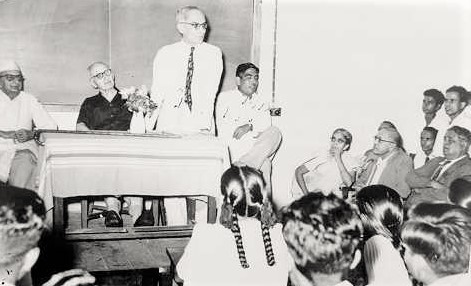
Ambedkar believed that education was the most important means of raising the people’s standard of living. His slogan was “Educate, unite, struggle”. However, his views on education were eclipsed by his seminal work for Dalit emancipation.
“Educate” is the first word of his famous slogan. The reason is education’s undeniable role in the building of human character and consciousness. Only an educated person can understand his class interests and bring about class unity. Education propels a person on the path of struggle. Dr Ambedkar said, “Education is what makes a person fearless, teaches him the lesson of unity, makes him aware of his rights and inspires him to struggle for his rights.” He believed that education is a movement. If it does not fulfil its objectives, it is useless. Dr Ambedkar unambiguously stated that an education that does not make a person capable, that does not teach him equality and morality, is not true education. True education cradles humanity, generates sources of livelihood, imparts wisdom and imbues us with egalitarianism. True education makes society alive.
Objectives of education
Ambedkar’s social-philosophical views rested on the bedrock of egalitarianism. Human dignity and self-respect were central to his social philosophy. He wanted to use education to establish justice, equality, fraternity, freedom and fearlessness in society. He wanted to replace the birth-based society with a value-based one. It goes without saying that these moral values can be promoted only through education.
Ambedkar was deeply influenced by Buddhist philosophy and he advocated development of morality in all people. He said only such objectives of education are meaningful that aid in making humans happy and prosperous and helping society progress. He was also in favour of making education relevant to employment. Education can help make society stable. Good behaviour and good conduct arise from logical reasoning and that can be acquired only through education, experience and dialogue. Ambedkar’s objectives of education were the same as his social, economic and political objectives. He was a strong proponent of logical and scientific education.
On curricula
Dr Ambekar’s had a practical approach regarding curricula. He believed that utility should be the basis for deciding curricula. But he was not favour of inflexible curricula. He said, “Nothing is immortal. Nothing is binding for an indefinite period of time, everything needs to be tested and examined, nothing is final, everything is bound by the cause-effect relationship, nothing is everlasting; everything is changeable. Things are happening continuously.”
The Bombay University Reforms Committee had sent a questionnaire to Dr Ambedkar to seek his opinion on various issues. Among the questions were:
- Are you generally satisfied with the subject and curricula at present prescribed for the various university examinations? If not, can you indicate the changes you desire?
- Are you in favour of establishing (a) an absolute or (b) a greater differentiation of the pass and honours courses? How would such differentiation affect the colleges and students?
- Would you approve of an absolute exclusion of science from the arts courses? Do you approve of the present dissociation of literature and arts from the study of science?
- Do you consider the existing courses for the graduate and postgraduate degrees provide a sufficient variety of options and satisfactory combinations and correlations of courses of study?
In answer to these questions, Dr Ambedkar wrote: “I should leave these questions to the newly constituted faculties. My opinion is that the curriculum, even of the honours course, provides a poor fare to the students.”
It is clear that Dr Ambedkar was not in favour of an external agency imposing curricula on an educational institution. He believed that the teachers concerned should design it themselves. He believed in democratic curricula, which should be put together by teachers concerned, in keeping with the demands of the subject and the students. He was in favour of curricula that would help students get employment and would make them capable. Dr Ambedkar emphasized complete and compulsory education. For him, technical education was a priority, as were scholarships for the weaker sections and higher education in general.
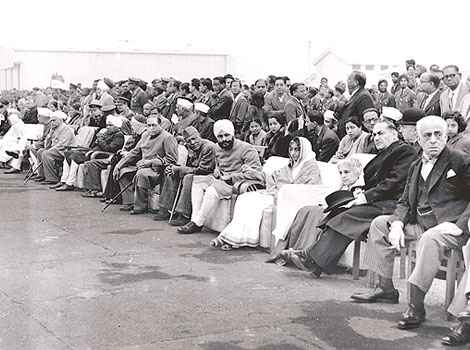
Ambedkar took a pragmatic view of things. He considered education as a means for self-expression, for building self-esteem and character, for determining proper conduct and for learning through experience. He believed that the students should try to understand and unravel earthly and transcendental mysteries. He advocated instructing children in different regional languages. Despite having respect for all languages, he felt the need for a common language that would become the means of communication between people of different parts of the country and thus promote unity and integrity. He was for scientific methods of teaching, especially vis-à-vis higher education. He said that real education should not awe us; it should appeal to our logic and reason. He believed that religious instruction had no place in curricula. He was for using a worldly yardstick to assess the value of education. He stood for a uniform education for all classes and that was why he advocated scientific and progressive curricula, based on the principles of social democracy.
The ideal teacher
In Dr Ambedkar’s scheme of things, the teacher had a big role to play in the process of learning and imbibing. He himself was deeply influenced by his teachers; in fact, he had added the surname “Ambedkar” of one of his teachers to his name. That teacher, incidentally, was a Brahmin. This shows the great respect Ambedkar had for his teachers. He was not against the Brahmins as a caste. He was against brahmanical ideology. Talking about the ideal teacher, Ambedkar said, “He must not only be well-read but also a good orator and an experienced person.” In Dr Ambedkar’s view, “It is not necessary that we should agree with the conclusions of our teacher, and the teacher who recognizes this fact is the true teacher. The teacher’s job is to understand the mental abilities of the students and to develop them. He should guide his students. A good teacher is the friend, philosopher and guide of his students.” According to Ambedkar, a teacher should be knowledgeable about the reality of society so that they can interperse their teaching with anecdotes and make it relevant to the real world. Such a teacher deserves the respect of his students.
Teaching methodologies
Dr Ambedkar favoured the use of scientific teaching methodologies starting with primary education. Good health is key, he said, and the emphasis should be on hygiene and physical education. As for the children of the deprived classes, he said, “The first daily lesson in a school for these children should be a bath followed by changing into clean clothes; and the second should be a meal of clean, wholesome food; those who do this should be encouraged so that others learn from them.” He also emphasized on inculcating the right values and the right habits in the children from the beginning.
According to him, “Good manners, for instance, are the result of continual and rigid self-control, and of consideration for the comfort and convenience of others; children learn manners chiefly by imitation from well-bred parents and teachers and, secondarily, by suitable precept and reproof. If, at the school, they are to be made to associate with children not thus trained, they will quickly fall into the ways which they see around them. For, until good habits are rendered fixed by long practice, it is far easier to be slipshod than accurate, to be careless than careful. Gentle speech, well-modulated voice, pleasant ways, these are the valuable results of long culture.”
Dr Ambedkar was not a professional educationist and he has not made any theoretical analysis of teaching methodologies. But despite that, he has put forward excellent ideas on education. He was convinced that there shouldn’t be much difference between the teaching methodologies for graduate and postgraduate classes. He believed that teaching shouldn’t be separated from research. He advocated autonomy of universities in admissions, teaching, examinations and appointments.
Women’s education
For Dr Ambedkar, the lack of education among women was the biggest problem facing Indian society. He held Brahmanism responsible for the pitiable state of women in India. He believed that Brahmanism and masculism were inextricably linked. “There is no social evil and no social wrong to which the Brahmin has not given his support. Man’s inhumanity to man, such as the feeling of caste, untouchability, unapproachability and unseeability is a religion to him. It would, however, be a mistake to suppose that only the wrongs of man are a religion to him. The Brahmin has given his support to some of the worst wrongs that women have suffered from in any part of the world. In India widows were burnt alive as suttees and the Brahmin gave his fullest support to the practice. Widows were not allowed to remarry. The Brahmins upheld the doctrine. Girls were required to be married before 8 and the husbands were permitted to claim the right to consummate the marriage at any time thereafter.”
It is believed that women enjoyed many rights in the Vedic age, but that their position deteriorated afterwards. Dr Ambedkar showed that the Manusmriti had accorded women a status even lower than that of servants. They were deprived of education and the right to own property was snatched away from them. He insisted that women be treated with dignity and given adequate opportunities for growth.
He drafted the Hindi Marriage Act, which didn’t permit men to have more than one wife. It also gave women succession rights and the right to hold property, which had been denied to them by the Manusmriti. Ambedkar’s Constitution gave women equal status in the eyes of the law. He bitterly criticized all such traditions and norms which militated against equality of women. He favoured economic independence of women. Madanmohan Malaviya and Dr Shyamaprasad Mukherjee had opposed the Hindu Marriage Bill. But despite that it was passed. Its passage marked a milestone in the history of women’s struggle in the 20th century. Articles 14, 15(3), 16(1) and 16(2) of the Constitution have provisions to ensure that women are not discriminated against. Ambedkar’s views on women’s education and development of their personalities were no less radical than those of the feminist movements under way today. He was in favour of compulsory education for women, but only up to the matriculation level, after which, he suggested that they acquire home-management skills. He was not in favour of uniform education for men and women. He felt that both have different roles in society, hence their education should also be different.
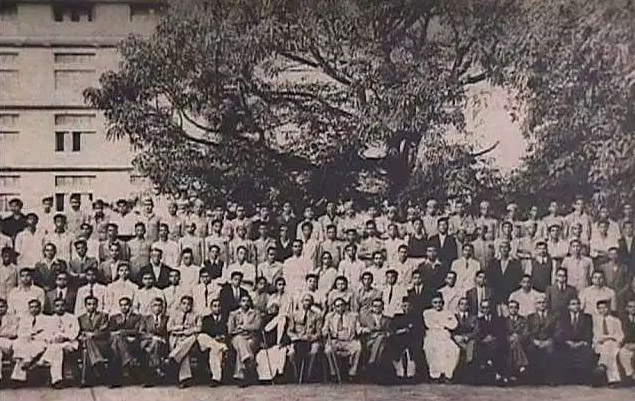
However, as the chairman of the drafting committee of the Constitution, he made ample provisions for development of women and their economic self-dependence. These provisions enabled women claim a status equal to that of men in independent India.
Religious instruction
Most of the educationists have not clarified their views on religious education for the fear of offending the religious feelings of the masses. They fear the opprobrium it would earned them. But Dr Ambedkar was not a timid man. He took a clear-cut stand on the issue. He had already emerged as the most controversial Hindu of his time. He had to face brickbats all his life but that did not affect him a bit. He kept on calling a spade, a spade. He said, “My social philosophy is a mission. I have to work for religious conversions.” Dr Ambedkar had no faith in god. He wanted to reorganize Indian society, not on the basis of religious but on the basis of liberty, equality and fraternity. He never refrained from borrowing good things from different religions but he was inclined to Buddhism. He admitted that his philosophy was rooted in the teachings of Buddha. Liberty and equality were the cornerstones of his philosophy but he also knew that unlimited freedom destroys equality, and perfect equality undermines freedom. Law could protect freedom and equality to an extent, but he believed it was fraternity that was the real protector of freedom and equality. For him, there was nothing better than religion to teach fraternity and the inclusion of the value of fraternity in education was imperative.
Technical education for Dalits
“They [Scheduled Castes] have not progressed in science and engineering education,” Ambedkar said. “Education in arts and law cannot be of much value for the scheduled castes. They will benefit more by advanced education in science and technology.”[6]
At the time, technology and technical education were not as advanced in India as they are now, but specialized educational institutions in these fields had been set up. If Ambedkar emphasized engineering and science education for the Dalits, there was a reason for it – and that was the employability of students who had studied engineering and science. That is true even today. In India, even now, students who have studied science and technology stand a better chance of securing employment than those who have been trained in humanities. He urged the Government of India to take steps to ensure that Dalit students are admitted to the Indian School of Mines after he discovered that not even one of the 97 students in the school was a Dalit.[7]
Technical education, being very costly, was out of the reach of the Dalits. According to Ambedkar, “The Government of India can do a lot for improving the future of the Dalits. The SC boys can be kept as apprentices in such industrial units [such as the government printing press or railway workshops] which are under the control of the Government of India or are run by it, where there is a possibility of giving technical education.”
Scholarships for Dalit students
Dr Ambedkar demanded scholarships for Dalit students. Then, scholarships were being given only to students of religious minorities. He said, “Without government aid, the Scheduled Castes will never be able to gain access to advanced education in science and technology and it will only be just and proper that the Government of India comes forward to extend help to them in this regard.”[8] He proposed that: “1. Such Scheduled-Caste students who take admissions in science and technology courses in universities or in other scientific and technical training institutions should be given scholarships worth Rs 2 lakh per year. 2. Rs 1 lakh as grant-in-aid should be provided to SC students for studying science and technology in universities in England, Europe, America and the Dominion.”[9]
Dr Ambedkar also showed to the government the way this could be done. He proposed that the instead of grants, scholarships should be given in the form of loans.
Reservations for Dalit students
Reservations proved to be the most successful instrument for ensuring the representation of Dalits in institutions of higher learning. Ambedkar proposed “reservation of some seats for such boys of Scheduled Castes who have attained the minimum standard of education for seeking admission.”[10] He proposed setting aside of 10 per cent of the seats for such students. His objective was clear – to give representation to Dalit students. He also wanted similar participation of the Dalits in statutory bodies. He raised the issue of representation of SCs in the Central Education Advisory Board.
Assessing Dr Ambedkar’s thoughts on education
Dr Ambedkar’s ideas were challenged by Gandhi ji. Or, we could say that Dr Ambedkar challenged the ideas of Gandhi. In the course of this debate, both refined and improved on their ideas. As Ambedkar had little interaction with other educationists, we only have Gandhi to compare him with.
Both Gandhi and Ambedkar were not only individuals; they were schools of thought, they were institutions. Since none of them believed in treading a beaten track, they triggered controversies when they were alive and continue to do so when they are long dead and gone. Their goals were almost the same, but their ways of getting there were entirely different. What is painful and unfortunate is that the followers of both have confined themselves to impermeable fortresses, leaving no scope for dialogue. Ambedkarites firmly believed that Gandhi was anti-Dalit and Gandhians are equally sure that Ambedkar was a traitor. How can we expect Gandhians to study Ambedkar when they are not ready to read even Gandhi? The Ambedkarites are no diffeent. The fallout of this has been that the values and struggles of Ambedkar and Gandhi have been overlooked.
For the Congress and Gandhi, “emancipation of the Untouchables” was an internal problem of the Hindus while for Ambedkar, it was the most important issue. Like in the case of the zamindari system, Gandhi sought solution to the problem of untouchability in a change of heart. He was for eradicating untouchability while keeping the varna system intact. Ambedkar held that varna and caste were at the root of untouchability and wanted to annihilate both. Gandhi was driven by a feeling of “mercy” and “sympathy” for Dalits, while Ambedkar wanted their rights to be restored.
Their differences were never as stark as just before the Poona Pact was signed. Gandhi’s fast had created a big dilemma for Ambedkar. On the one hand was the struggle for the rights of the Dalits and on the other hand was Gandhi’s life. Ultimately, a compromise was worked out.
Gandhi and Ambedkar had different views on almost everything under the sun. That was true about their views on education too. Gandhi was dead opposed to the British education system and proposed his own “Buniyadi Shiksha”. Gandhiji wanted to bring about spiritual growth of students so that they could lead a life of truth and non-violence. His educational philosophy was idealistic. In contrast, Ambedkar wanted his education to reach the weakest of the weak and wanted to build a system based on liberty, equality and fraternity. His concept of Dhamma, based on the philosophy of Buddhism, stressed moral development. He was not against British education but wanted to give it a humanistic face. He was in favour of an educational system that would produce men of reason and logic; that would help build a society based on logic and reason. He wanted education to not only make a person egalitarian but to liberate his mind and make him capable of objective, logical and critical analysis. He believed that a common education system was essential for building a democratic and socialist state. He said that the curricula should be modern, based on scientific reasoning and should cover the modern means of production. He favoured nationalization of all means of production. He said that the students should be introduced to the means of production and a socialist way of life.
If one compared the thoughts of Gandhiji and Ambedkar, one would realize that despite some commonalities, the gulf between them was too wide to be bridged. Gandhiji was a respecter of traditions; Ambedkar was opposed to almost all traditions. Both had concern for the poor but Ambedkar was more concerned with the right to equality of the weak and fought for it all his life. Gandhiji held no grudge against the elite of society; Ambedkar was against the elite and considered them a threat to humanity. Gandhiji was more concerned about the country as a whole while Ambedkar was focused on the backward classes. Gandhiji wanted the spinning wheel to reach every village and all rural residents to get a basic education. Ambedkar was concerned about those sections that had been deprived of education for centuries. He wanted that the government to provide free and compulsory primary education to all. Gandhi favoured vocational education from the primary level; Ambedkar believed that literacy should be the prime objective of primary education. Ambedkar also laid stress on cleanliness, physical education and cultural development. He believed that primary education should inculcate such cultural and civilizational values in children that would help them become part of a civilized society.

Gandhiji did not give much thought to higher education but Ambedkar talked about it in detail – so much so that he even proposed the administrative structure of an ideal university. His views on higher education are valid and relevant even today. Gandhi advocated religious education, but Ambedkar was least interested in it. The basic difference between their thoughts was that one (Gandhi) was religious while the other was secular. One was a protagonist of a life close to nature, the other for modernity. Character building was the objective of one while the other focused on building a man of reason and logic. Both, though, were for teaching in regional and local languages.
Dr Ambedkar’s thoughts are not only relevant for the Dalit community but for the entire Indian society. Today, we talk of enhancing the budgetary allocation and expenditure on education. But what we envisage is a maximum two per cent of the total budget. Ambedkar had raised this demand long ago. While we have implemented Right to Education for the primary classes, no one is concerned about what a student will do after acquiring primary education.
If we have to pick one person from the Indian history who paved the way for education and employment for the Dalits, who made them aware of their rights, who freed them from the exploitation by other classes, who showed to the world that they were second to none in intelligence and capabilities – then there can’t anyone other than Dr Ambedkar. He did not expound on education like Mahatma Gandhi or Dayananda Saraswati or Vivekananda but whenever an opportunity came his way, he did express his views on education explicity. He wrote:
“If the government is sincere about promoting education among the Depressed Classes, there are certain measures which it must adopt:
(1) Unless the Compulsory Primary Education Act is abolished and the transfer of primary education to the school boards is stopped, the education of the Depressed Classes will receive a great setback.
(2) Unless primary education is made mandatory and the admission to primary schools is strictly enforced, conditions essential for the educational progress of the backward classes won’t be created.
(3) Unless the recommendations made by the Hunter Commission regarding the education of the Mohamedans are applied to the Depressed Classes, their educational progress will not be realized.
(4) Unless entry in the public service is secured for the Depressed Classes, there will be no inducement for them to get an education.”[11]
He made such provisions in the Indian Constitution which would help the Dalits and the deprived get education and employment. Some instances are:
Article 15(A): Making special provisions for any community or SC/STs who are educationally backward
Article 17: Abolition of untouchability and equal status to all persons.
Article 29: About admission of weaker sections in government educational institutions
Article 30: About minority educational institutions.
Article 30(ii): About monetary aid to educational institutions.
Article 39: That the citizens, men and women equally, have the right to an adequate means to livelihood;
The Poona Pact between Ambedkar and Gandhi paved the way for reservations for Dalits. It was reservations that brought about a basic transformation in their educational levels and standard of living. If, today, Dalits have a presence in different walks of life, it is primarily due to reservations. Ambedkar was always concerned about the education and employment of Dalits. His ideas continue to be relevant for the Dalit community even today.
[1] Baba Saheb Ambedkar, Sampoorna Vangmay vol 3, p 55-56
[2] ibid vol 3, p 56
[3] ibid vol 3, p 56-57
[4] ibid vol 3, p 57
[5] ibid vol 3, p 59
[6] ibid vol 19, p 2
[7] School of Mines was is a Dhanbad-based centre of higher learning in mining, engineering and geology under the Government of India.
[8] Baba Saheb Ambedkar, Sampoorna Vangmay vol 19, p 24
[9] ibid vol 19, p 24
[10] ibid vol 19, p 25
[11] ibid, vol 4, p 146
Forward Press also publishes books on Bahujan issues. Forward Press Books sheds light on the widespread problems as well as the finer aspects of Bahujan (Dalit, OBC, Adivasi, Nomadic, Pasmanda) society, literature, culture and politics. Next on the publication schedule is a book on Dr Ambedkar’s multifaceted personality. To book a copy in advance, contact The Marginalised Prakashan, IGNOU Road, Delhi. Mobile: +919968527911.
For more information on Forward Press Books, write to us: info@forwardmagazine.in

